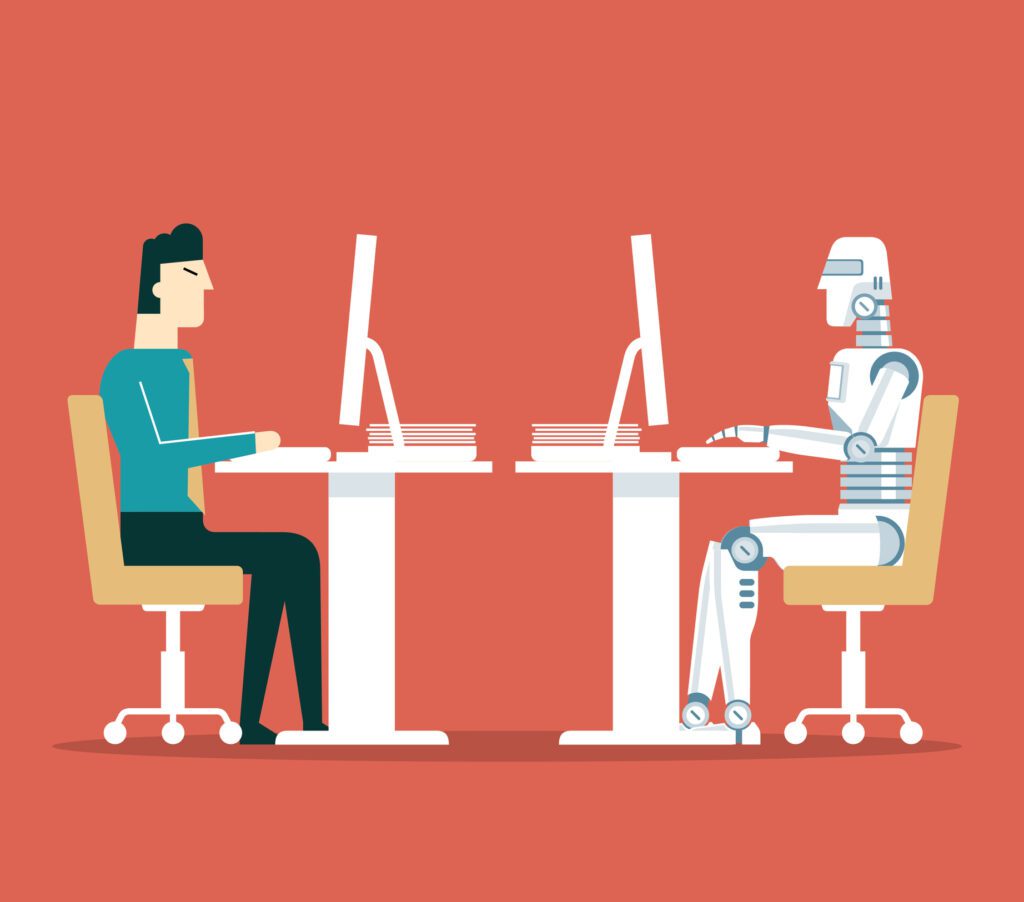It’s Time to Play the AI Candidate Game

The idea sounds ridiculous, but someone will do it. Like, really do it.
Today, campaigns are almost certainly using large language models (LLM) like ChatGPT to write the first drafts of platforms, press releases, and speeches. Those that haven’t already will next cycle. It’s inevitable that AI will be integrated into every campaign team function.
As a result, AI will progress from a distant and scary idea to a tool, an advisor, and eventually a trusted friend. We will all have AI assistants. And when we have so-called “Strong AI,” Artificial General Intelligence (AGI), we’ll explore if it should, or even how it can lead us. It may even take center stage as the candidate. There’s no question that this technology will reshape democracy as we know it.
How would a near-future campaign team run an AGI for president? How would the campaign structure itself? Let’s run the thought experiment.
A near-future campaign team for an AI candidate will still have a manager, a strategic communications team, fundraising and finance, advertising, GOTV and legal. But it’ll be different, and here are the 10 ways it will be different:
1. The candidate will be a well-known political leader from the past.
No one will want to vote for a super-intelligent HAL meets Max Headroom.
By the time we have AGI, Americans will be using personalized AI assistants and working with AI tools. They’ll be more comfortable with the technology. An AI candidate based on a historically successful president will be far more relatable, predictable, and authentic. And in our scenario, Abraham Lincoln 2.0 isn’t term limited.
2. Team building will be essential.
A team will build the AI candidate. That team will train the AI on all of a former president’s speeches, writing, and correspondence. A team of politicos and historians will train the AI together and help determine its positions on contemporary issues.
3. Enter the design team.
A Design Team will use facial and body mimicking software to create a hyper-realistic, digital version of the candidate. This will be critical and a large investment, because it will be the way voters meet the candidate.
4. The VR office.
The campaign team will still meet with the candidate, but they will meet in a virtual office in virtual reality.
5. Retail politics scaled.
Voters will access the candidate via online chat, virtual reality, augmented reality, and at events as a hologram. This means that the user experience team, the digital tech team managing these platforms, will be the core of the campaign.
6. All the time, anyone, all at once.
Campaigns will quickly discover that an AI candidate has several advantages over a human candidate, but the greatest will be the ability to talk with any voter, anytime. An AI candidate will destroy the distinction between retail and wholesale politics. It’ll be able to converse with millions of voters at the same time, without the need for sleep, food, or travel. The core campaign metric will be candidate downloads, candidate interactions, and the average length of those interactions. Meanwhile, the advertising team will be tasked with driving up 1:1 online interaction with the AI.
7. Whither the comms team?
The role of the comms and speechwriting teams is uncertain. Reporters may simply prefer to ping the AI directly for comment. The AI could write its own speeches, but I assume it would take some senior guidance.
8. Debate trainers and message discipline.
The comms team may undergo significant change, but an AI candidate will need debate trainers to help it avoid traps and to feed it information supporting its line of argument. No human candidate on the debate stage will be able to match its message discipline or citation of supporting data.
9. Cybersecurity
Candidate security will be cyber security. The campaign will need to back the candidate up in far flung server locations in case hackers take one of those servers down. Hackers and political opponents will also create bots to overwhelm the AI with questions.
10. Disinformation security.
Finally, the campaign will need a robust anti-disinformation team to fight back against deep fakes. Opponents will create deep fakes posing as the candidate, and may even create alternative AIs in order to confuse the voting public.
Robert Moran is a data driven advisor at the Brunswick Group and a public opinion expert. He began his career in political polling and just completed writing “Lincoln 2.0.”
